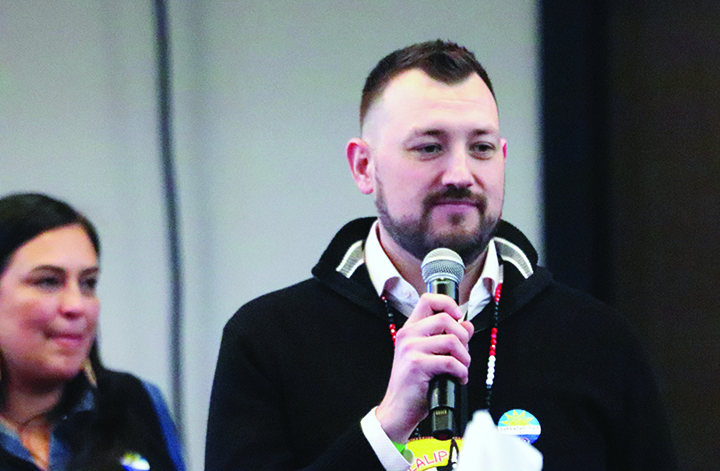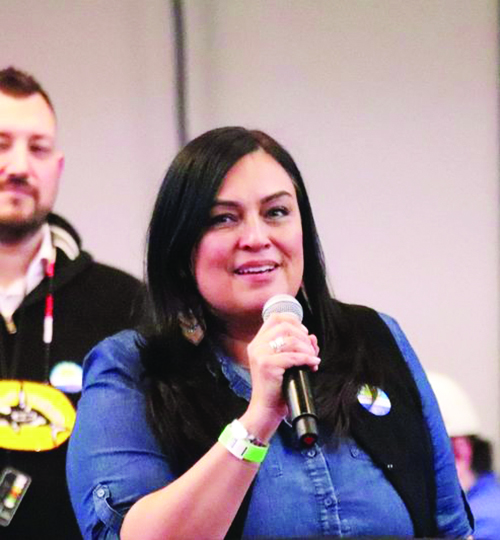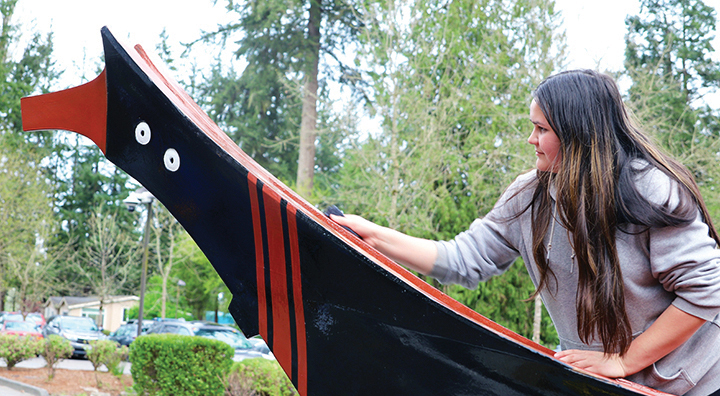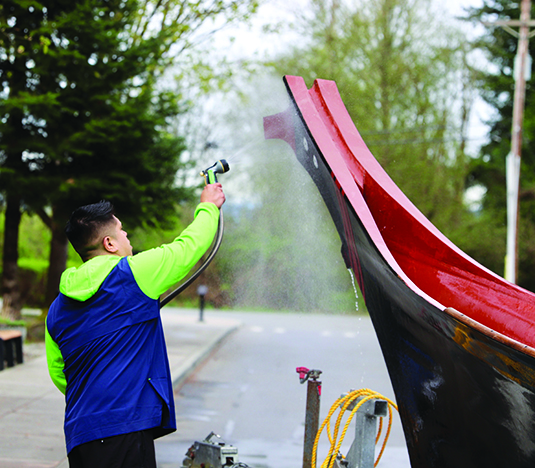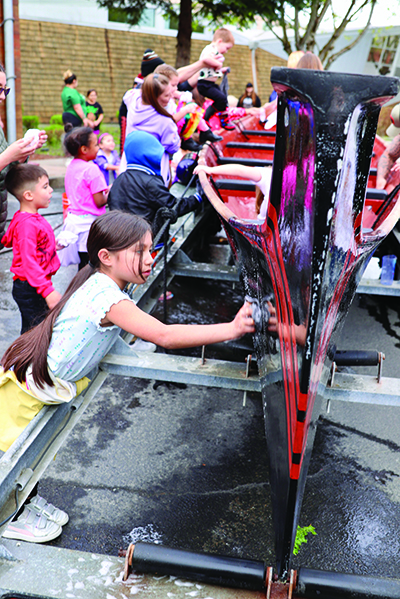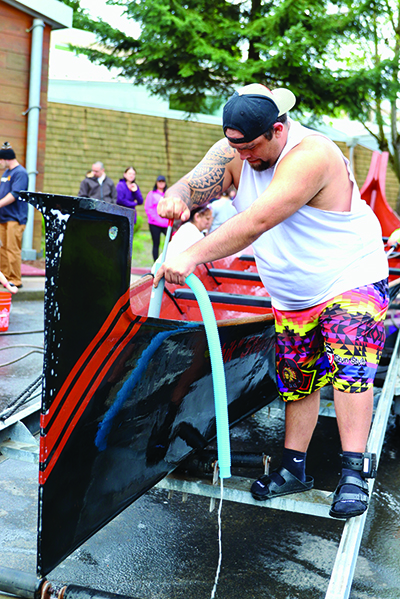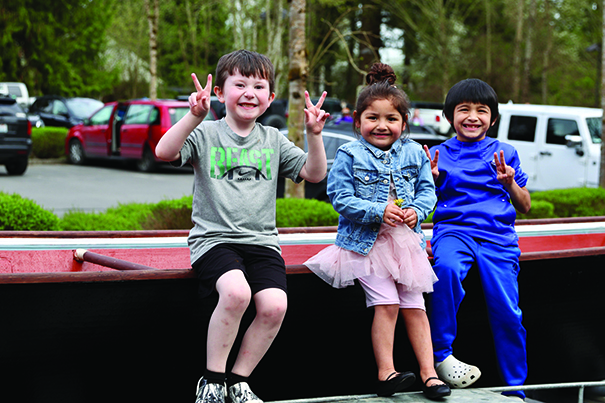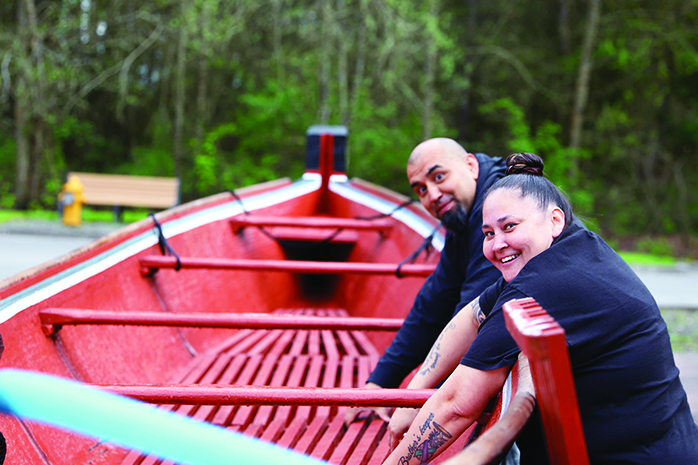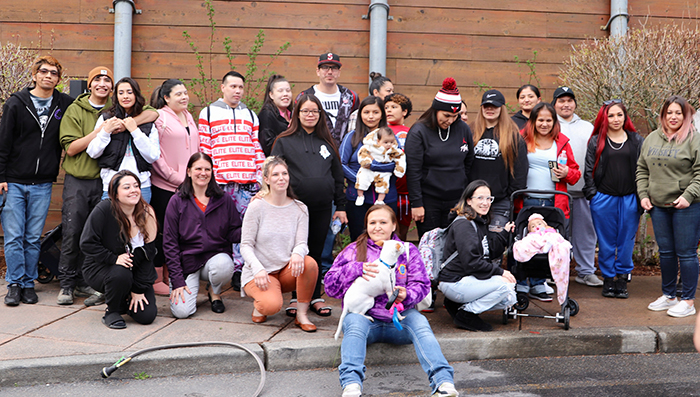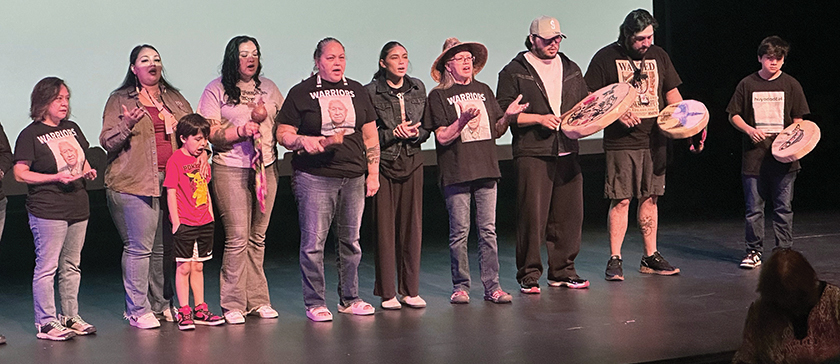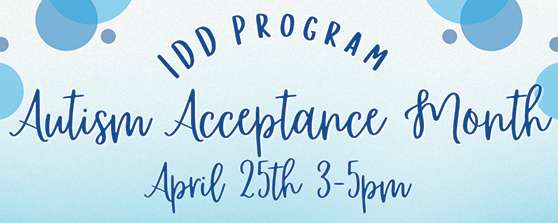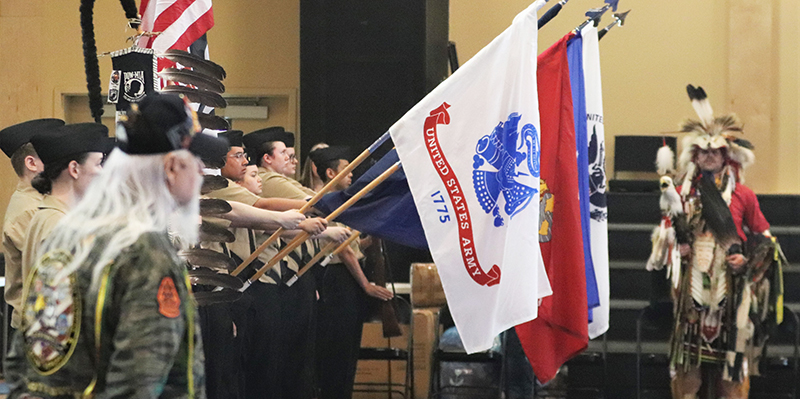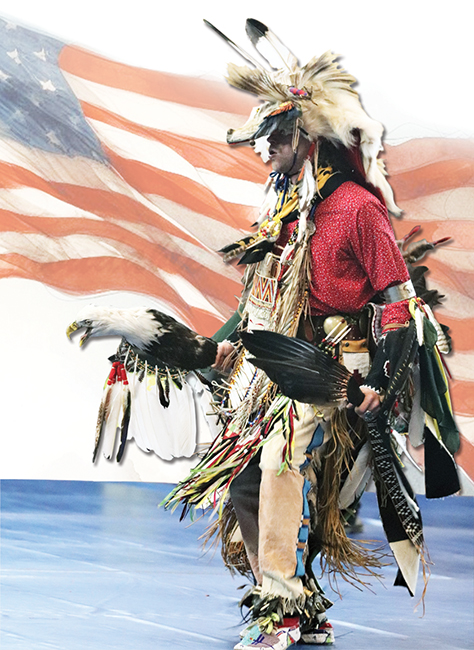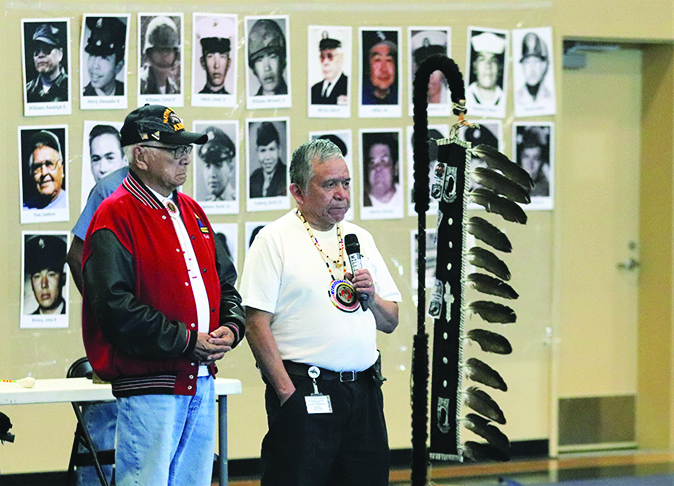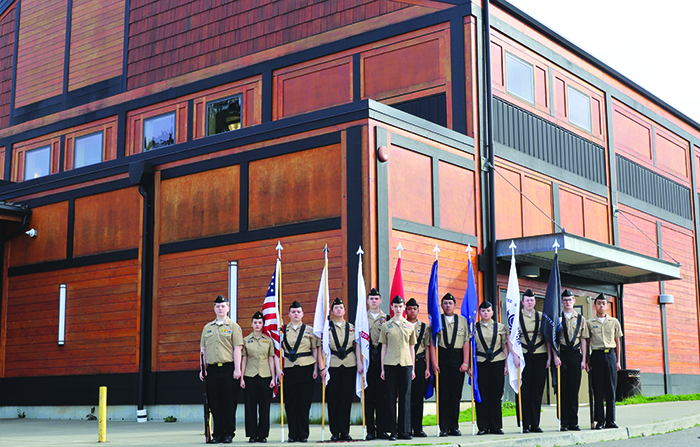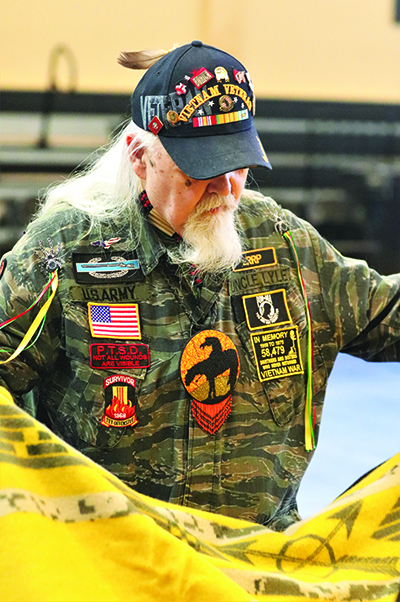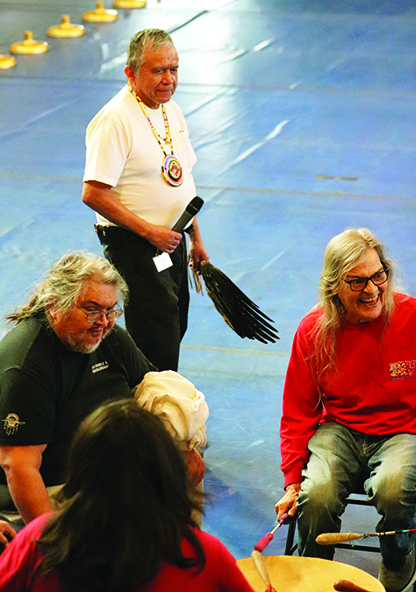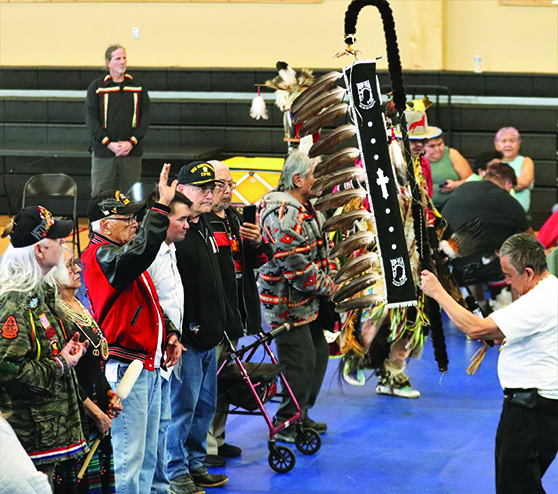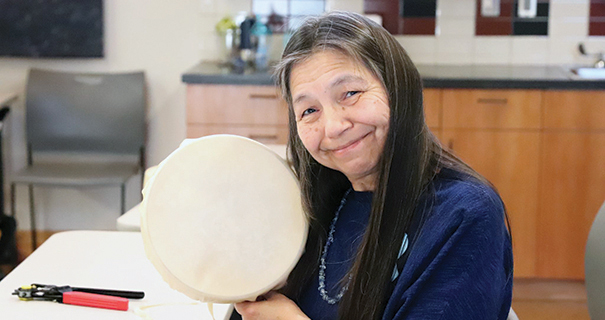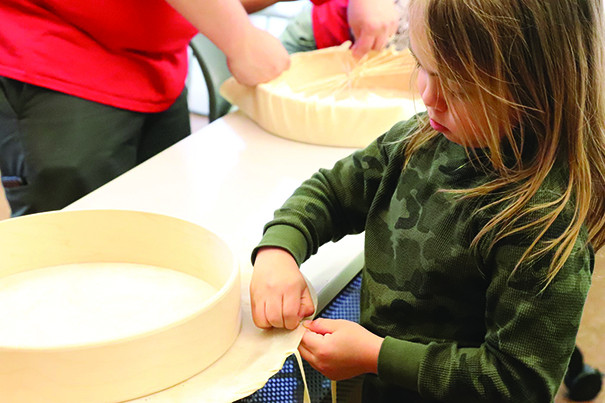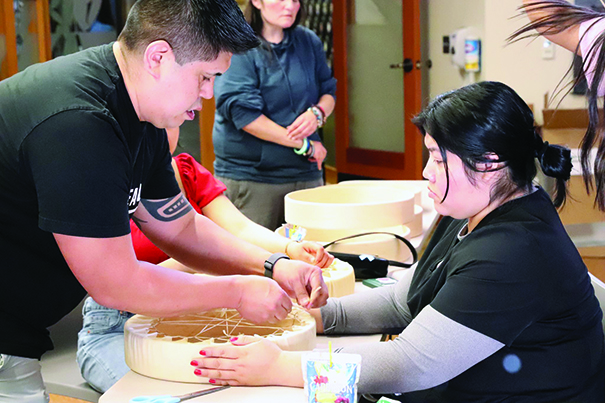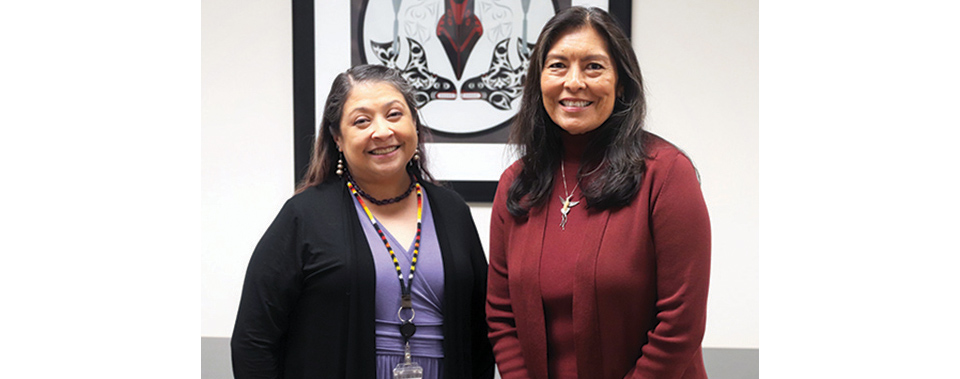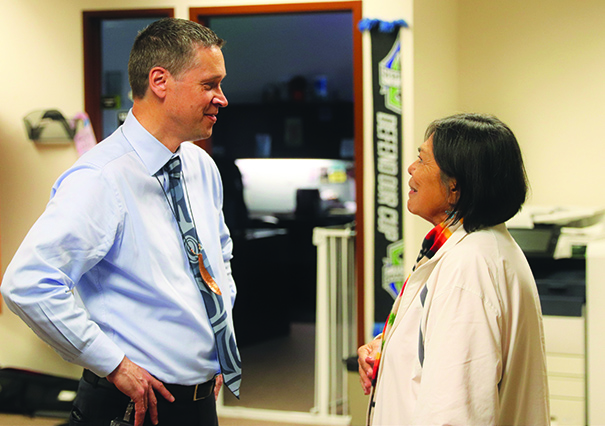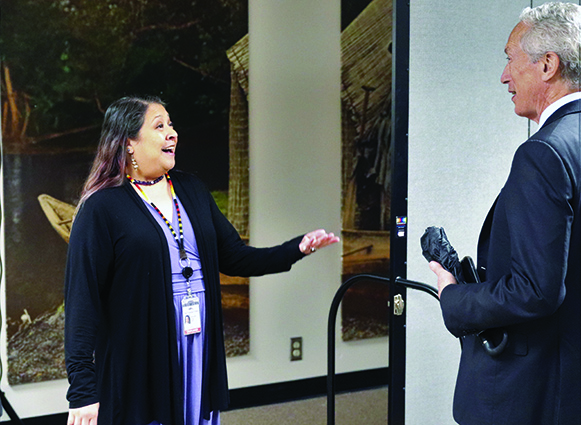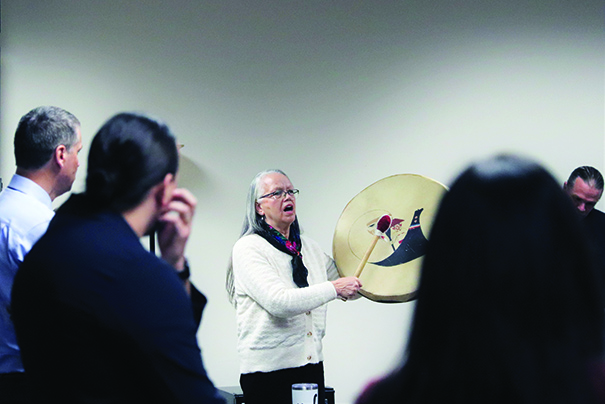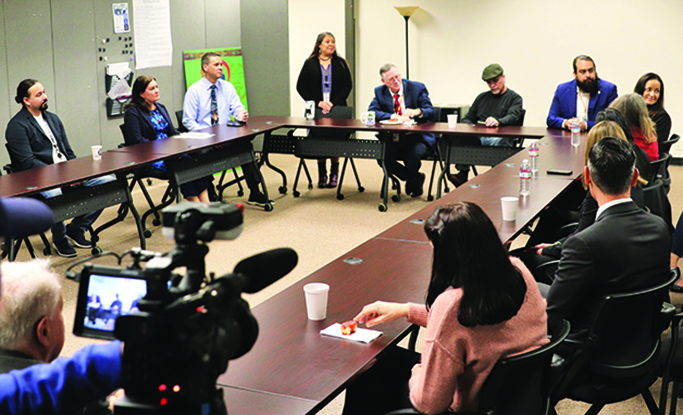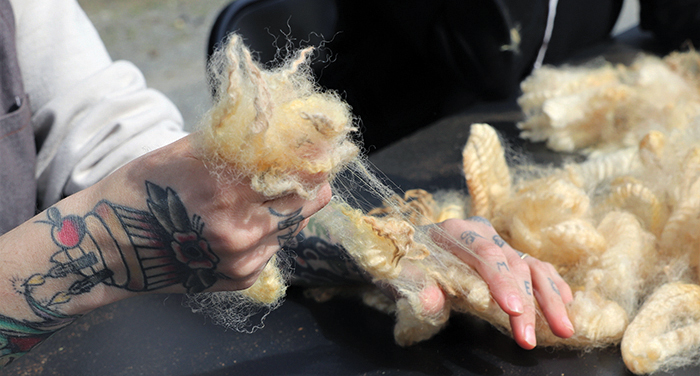
By Micheal Rios, Tulalip News
The meditative motions and alluring sights associated with traditional wool weaving are resonating through Tulalip, once again. Across traditional Coast Salish territory, from Skokomish to Lummi and into British Columbia, tribal culture bearers are actively reviving the generations-old practice that is wool weaving – an art form nearly lost because of colonization and forced assimilation.
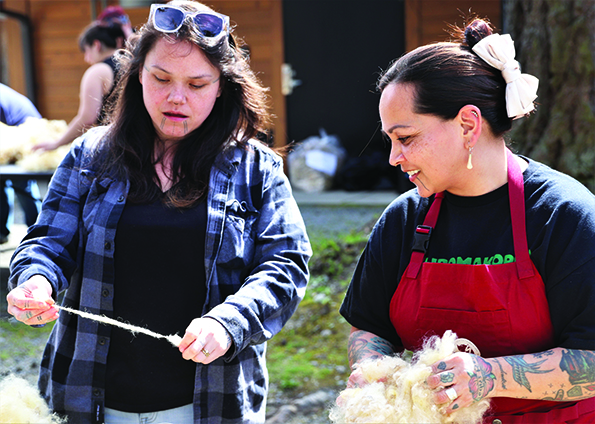
Historically, Coast Salish wool weaving wasn’t simply an art form. Rather it was an essential skill practiced and embraced communally for the warmth it bestowed, both physically and spiritually. Using wool from mountain goats and specially bred Salish Wool Dogs, sadly now extinct, our Coast Salish ancestors wove robes, blankets, and regalia infused with cultural significance. Every piece told a story and linked the weaver to their land and people.
However, with the arrival of European settlers and the implementation of boarding schools, the weaving tradition was suppressed. Generations were cut off from learning the techniques and ancestral knowledge associated with the practice.
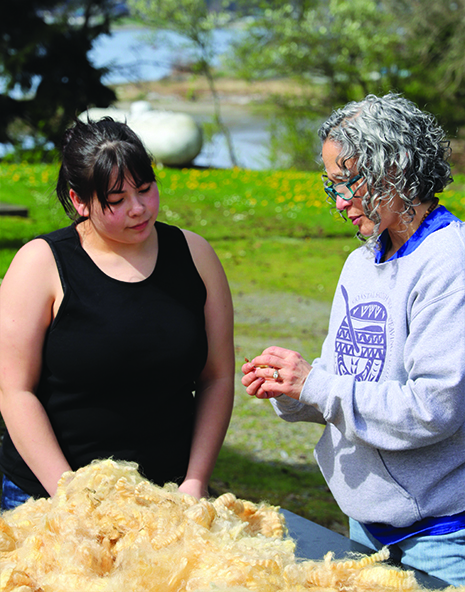
Now, in a resurgence of cultural identity, a cohort of aspiring Tulalip weavers are intent on reclaiming their heritage. They are the majority of enrollees in a first-of-its-kind wool weaving program offered by Evergreen State College that is actually held on the Reservation. The program required a year-long commitment, wherein participates dedicate the first weekend of each month to an incredibly hands-on, three-day session taught by the one and only, master weaver Susan Pavel.
The Center for Washington Cultural Traditions detailed how Susan Pavel, Ph.D., first learned the Coast Salish wool weaving tradition on the Skokomish Reservation from master weaver Bruce Miller during the summer of 1996. At that time, Bruce was one of only three practicing weavers. After years of producing ceremonial blankets for Skokomish elders, Susan’s teacher invited her to teach weaving classes and carry the tradition, saying “It is through teaching that we truly honor the spirit.”
2025 marked twenty-nine years of wool weaving and honoring the weaver’s spirit power for Dr. Pavel. She is routinely approached by promising weavers seeking an apprenticeship, while also presenting weaving demonstrations at various prestigious venues. For her latest prestigious venue, she selected the Tulalip homeland.
“I very thoughtfully and purposefully chose Tulalip,” explained Susan. “I wanted to bring these teachings to Tulalip so that those who learn can share either their family. Think of the auntie or cousin who comes in and witnesses a wool weaver’s process in live-action. There’s an excitement, right? An excitement that can cause a spark of curiosity to fuel a lifelong passion. By seeing wool weavers in the family and making wool weaving a regular sight again, that’s how we reach the little ones of the next generation. How do you reclaim the wool weaving tradition? By making wool weaving traditional. That’s my dream for Tulalip.”
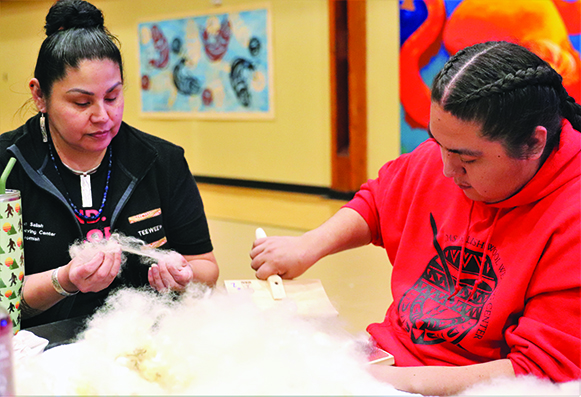
In collaboration with Evergreen State College, Tulalip’s Education Division, and Coast Salish Wool Weaving Center, the Coash Salish wool weaving certificate program officially launched earlier this month. Base of operations is the Don Hatch Youth Center and its pristine backdrop of luscious cedar trees and calm waters of Mission Creek entering Tulalip Bay.
Two dozen culture bearers became acquainted with natural sheep fiber in its rawest form while learning the preparation stages required to turn wool into yarn. Under the natural sun light, they worked diligently to tease apart the clumps of raw sheep fleece and loosen the fibers. This picking process helps shake out barnyard bits, such as dirt, debris and ol’ fashioned poo. It’s a necessary pre-cleaning process done by hand that establishes a connection between the weaver and the sheep who provided the wool bounty.
Indigenous plant specialist Tayna Greene shared her thoughts amid the synthesizing process. “We’re learning to process modern sheep as a fiber similar to how our ancestor’s processed mountain goat and the wooly dog. In my experience learning plant medicines I’ve processed cedar, fireweed, nettle and cattail fibers, to name a few, but never sheep’s wool. I’m excited to learn a new teaching, especially one like wool weaving that can become a resource to teach our youth and work with our elders. Honestly, this feels like a Creator-type moment where I just feel like I’m on the right path, doing the right thing.”
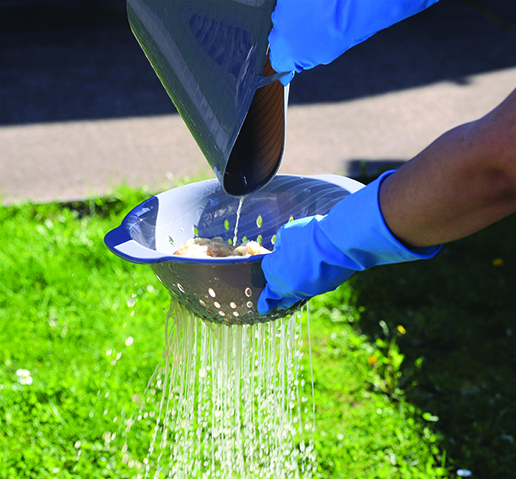
After hours of picking, the class moved to the Youth Center kitchen area to begin the scouring step. Raw wool is full of lanolin, which is natural sheep grease, that needs to be washed out in order to have a clean, fluffy fleece. In order to remove the lanolin, the thoroughly picked wool is soaked in hot water with a gentle soap, like Dawn, for 10-15 minutes. The wool is then rinsed to reveal a bright, gold-colored textile that is ready to be dried and carded.
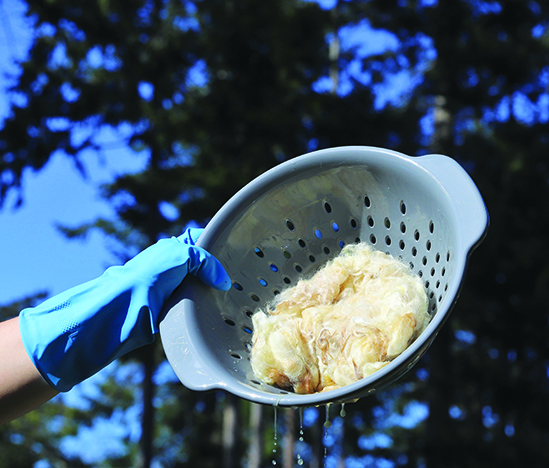
Carding aligns the wool fibers and gets them ready for spinning. Susan showed the group her preferred method of using two flat paddles with wire teeth. One by one, they loaded a bit of wool onto the carders and brushed them against each other, back and forth. This detangles the wool fibers, removes any leftover debris, and results in a fluffy mat called a batt.
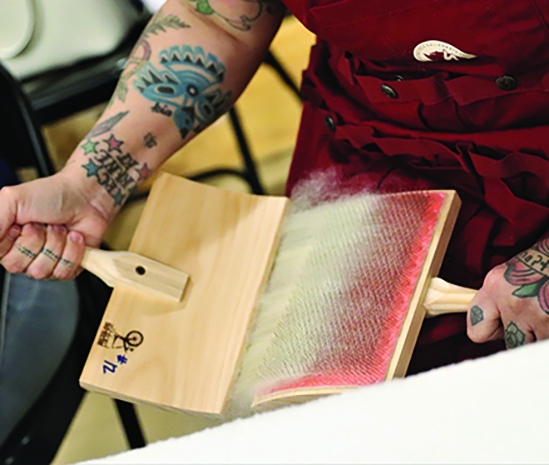
While taking a momentary break from carding her wool, elder Lena Hammons said, “It’s just so humbling to be among so many community changemakers who are intent on keeping our culture and traditions alive. It’s so often said ‘We’re losing our teachings. We need to get our teachings back. We need our young ones to step up and learn.’ Well, when I come to gatherings like this and witness our people, our actual young ones, stepping up to learn, it just warms my heart to know that long after I’m gone these teaching will continue.”
Picking, cleaning, and carding are just the first three prep stages required for turning a raw fleece into yarn. As they move along to further stages, like the fascinating sight of spinning with a spindle whorl, we will continue to document their progress. It’s a slow, hands-on process that provides the group with plenty of shared laughter and bonding moments as they collectively work towards reclaiming their wool weaving heritage via the legendary loom.
